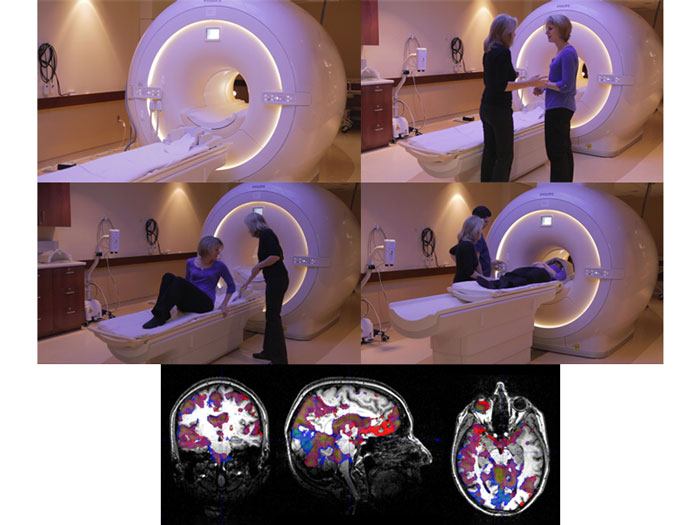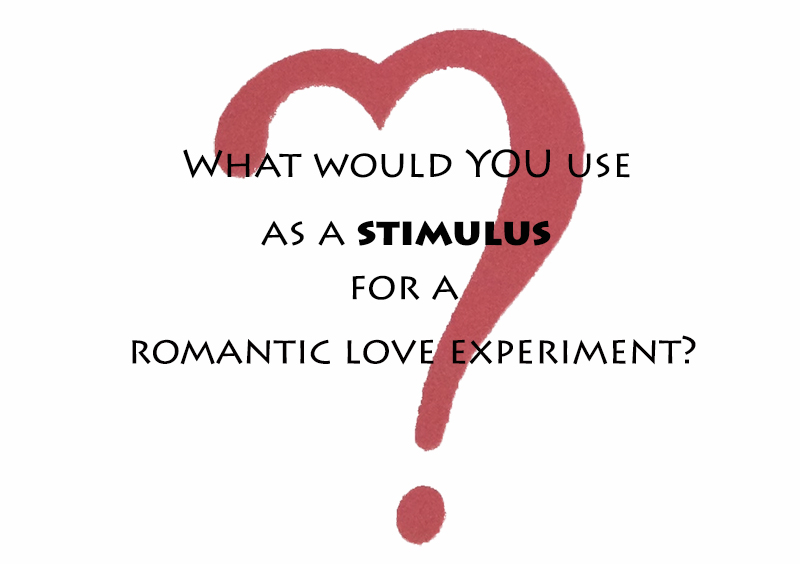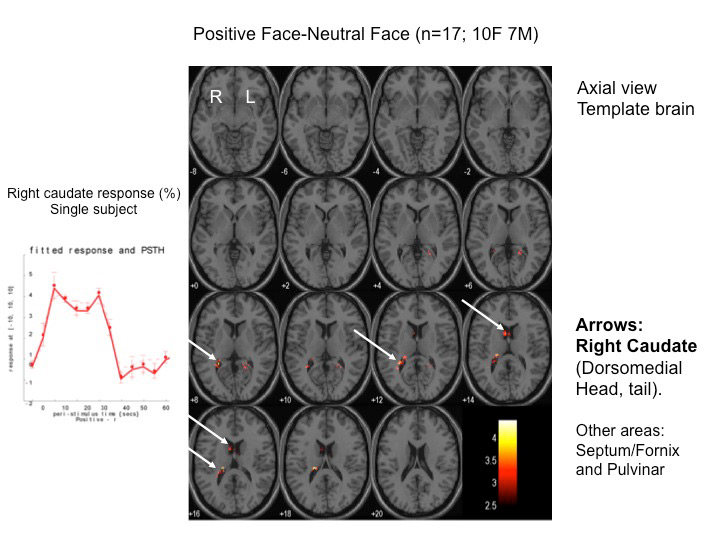
Please meet Derrick and Diana. We will follow them as they go through each step of our first brain scanning experiment. They had been “in love” for the past 6 months.

This is the photo (the Positive stimulus) of Derrick that Diana brought into the lab; she planned to look at this picture to trigger her romantic passion as we scanned her brain.
But we needed to measure the activity in Diana’s brain not only while she was looking at Derrick, but also while her brain was at rest. We needed a “control” stimulus. Only by comparing the brain in love with the same brain in a neutral state could we isolate the brain regions linked with romantic passion.
We reasoned that another photo would be best, a photo of someone of the same gender and general age as Derrick, but who prompted no feelings of romantic passion or emotional attachment. We came to call this individual the Familiar Neutral.
This way we could measure the same brain in two different states: in love and not in love. Then by mathematically canceling out all that these two data sets had in common, including the noise of the scanner, we would be left with the brain in love.
NEXT



